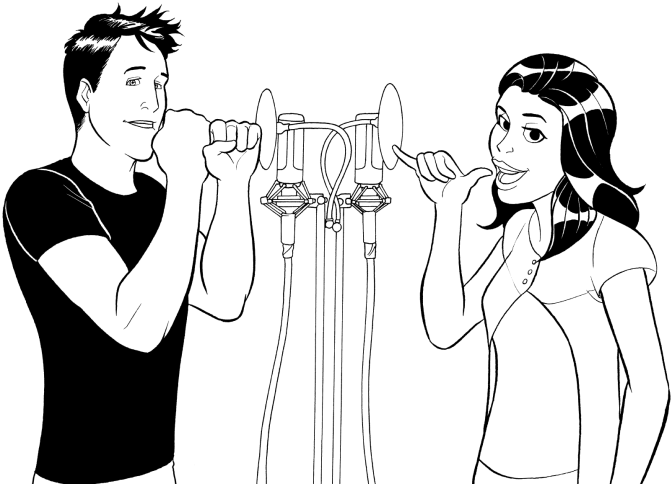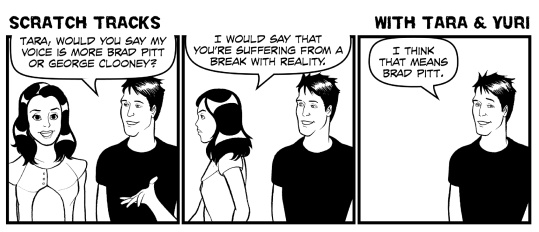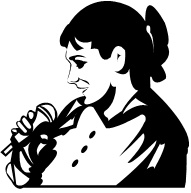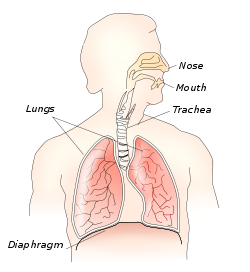
All the actors we know have their own tricks and tips for keeping their voices healthy – because if you lose your voice, there’s no real way around it.
Some of our favorite tools for soothing a sore throat or tired voice, or getting your voice prepped for an upcoming session, include all natural black licorice, non-caffeinated hot tea, honey (especially Manuka honey, an anti-bacterial, medicinal honey from New Zealand which you’ll have to go to a health store to find), primrose or fish oil capsules, lots of water, fresh pineapple or pineapple juice.
Also, we eat a lot of ginger and garlic which are said to have natural antibiotic properties; and while that might not directly affect our voices, it seems to keep us healthy. Staying healthy is important because we’ve found that when we get sick, our voices are the first things to go. We’ve also found that zinc helps nip a cold in the bud, or at least loosen its grip on us. You may want to keep these things around so you’ll have them when you need them.
You may find other things that are good for you. Great, add them to the list. Pay attention to what makes your voice feel good and what makes it feel bad.
Many people will tell you that before recording you should avoid milk products at all costs because it makes your voice thick and phlegmy, and in most instances they’re right. But sometimes we actually like to have a little dairy if our voices are particularly scratchy or raw because it tends to coat our vocal cords a bit. Obviously (because we’ve said it so many times), drink as much water as you can without starting to feel sloshy. Not just before a session, but as often as possible. Staying hydrated will help a lot more than just your vocal health.
Black licorice (natural, not candy) is said to have anti-inflammatory properties which can soothe and slightly numb the vocal area, so it can be nice after a grueling session. But many people don’t like the sharp taste. Yuri used to hate it, but after realizing how positively it affects his voice when it’s scratchy, he’s come not only to tolerate it, but maybe even like it. Maybe. Just a little.
Many types of cough drops can also be soothing. And while lemon and menthol (not necessarily together) are appreciated by some as a remedy, see how they affect you because some people actually find that the harsh properties of both lemon and menthol can aggravate a throat irritation.
Hot, non-caffeinated tea is nice for multiple reasons: it is warm, which keeps your voice loose and relaxed; and it keeps your throat moist. Honey, which can be mixed into tea or taken separately by the spoonful, has soothing and anti-bacterial properties.
Primrose or fish oil capsules, when ingested, are said to help strengthen your vocal cords and keep them lubricated. However, be sure to check the dosage: eating too many at a time could have … runny results. As with many types of natural cures, there is no scientific evidence proving that these oils will do something for the voice specifically, but the folks we know who use them seem pretty happy with their results.
Using fresh pineapple and pineapple juice as a natural antitheir -inflammatory is a tip that was given to us by a friend who has starred in many a Broadway musical. Singers often drink it or munch on it before, during, or after a show to keep the swelling in their vocal cords down when voices are tired from overuse. Hey, good enough for Broadway is good enough for us; and besides, pineapple tastes good.
Some folks will tell you that besides green apples for combating smackiness, green apple-flavored hard candies or even a sip of soda will help. We prefer the apple since it’s easier on the teeth and healthier in general. But once again, check with your body before you make your final selection: it usually knows best. Since you really just need the juice of the green apple, it’s too bad they don’t sell green apple juice. We’d buy it.
Things that we’re pretty confident you should avoid to keep your voice as healthy as it can be are smoke and caffeine. Hey, like we said before, we’re not your mom, your teacher, or the boss of you; but smoking and being around smoke seems like an obvious no-no, as smoke dries out your vocal cords and can change your voice, over time. Not to mention the effects of smoking on your lungs, mouth, etc. (we’re sure you know this already). Once again, it is very much a personal choice. We know both highly successful voice actors who are regular smokers and highly successful voice actors who never smoke.
Caffeine has a very similar side-effect to smoke: drying out your voice and often creating more strain on it when you use it. So think twice before swigging that morning cuppa joe on the way to your VO session, tasty though it may be. Or at least consider decaf.
+++++++++++++++++++++++++++++++++++++++++++++++++++++++++++++++++++
Check out our VoiceOverVoiceActor website for more tips and exercises. We post daily VO tips on Facebook and Twitter, and our book, Voice Over Voice Actor: What it’s like behind the mic includes a wealth of exercises to build your voice and keep it ready for a successful voice over career!
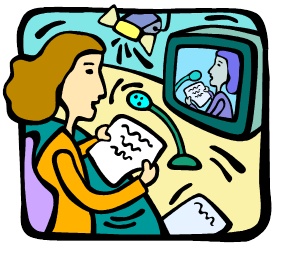 Here's a great tip and exercise for voiceover artists: use TV commercials as a source of practice. Really listen to the commercials on your TV or radio. When you find a good commercial you like, try to parrot the VO actor who is speaking the lines. You'll be repeating the words, of course, but also try to copy, as exactly as you can, the nuances, the tone, the inflections he or she uses, and the musicality.
Here's a great tip and exercise for voiceover artists: use TV commercials as a source of practice. Really listen to the commercials on your TV or radio. When you find a good commercial you like, try to parrot the VO actor who is speaking the lines. You'll be repeating the words, of course, but also try to copy, as exactly as you can, the nuances, the tone, the inflections he or she uses, and the musicality.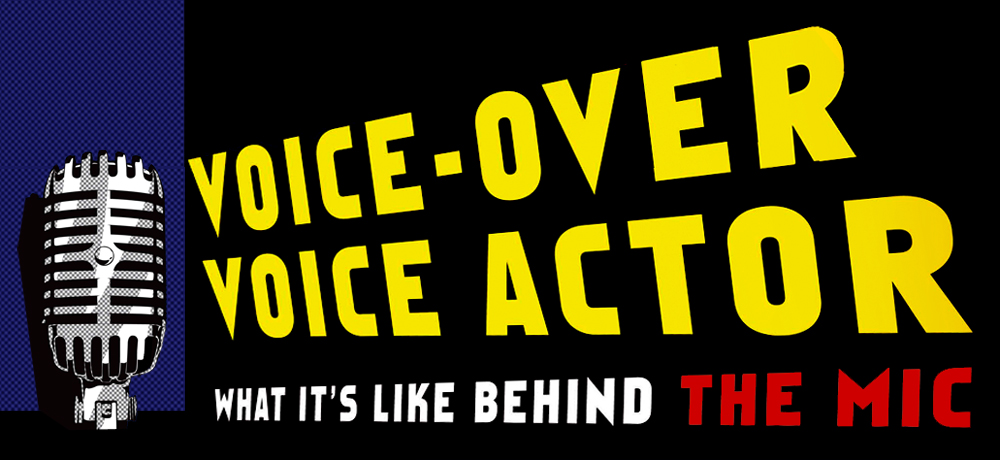



 This is something that can’t be said enough: you must know your own voice. No matter how long you’ve been living with your voice and how well you think you know it, you’re about to start doing things with it that you’ve probably never done before. So take the time to get friendly with your beautiful and unique pipes. You’ll learn to recognize your limits and your strengths.
This is something that can’t be said enough: you must know your own voice. No matter how long you’ve been living with your voice and how well you think you know it, you’re about to start doing things with it that you’ve probably never done before. So take the time to get friendly with your beautiful and unique pipes. You’ll learn to recognize your limits and your strengths.

